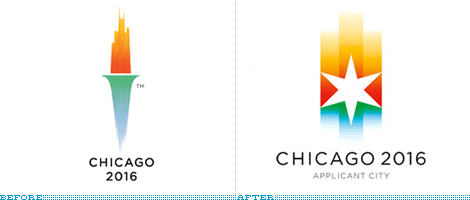Today I have a special treat for you. I'd like to introduce you to
Renaud Garnier, a very talented graphic designer colleague of mine. He's principal and creative director of
Smart Rebranding, a design shop located in Emeryville in the San Francisco Bay Area.

Since Renaud is a European transplant, (moved here from Belgium in 2000) I wanted to pick his brain about color and design, and how that differs from country to country. First, a little sampling of what he does.
Rachel: Would you give examples of projects where color played a major role in the development of packaging?Renaud: Color is the designer's most powerful and quiet ally. Needless to say that in branding, color always plays a major role with a strong emotional impact; but when it comes to packaging - especially for the food industry - it becomes critical.

A lot of white (purity), a touch of green (natural) and the contemporary and energetic orange are certainly major contributors to the success of this packaging. Developed for Tastebuds, a new brand of healthy granola cookies.

When a cosmetic start up, L'Epi de Provence, asked us to define 6 colors representing scents for bath gels, the choice was fairly easy, harmonizing 6 different colors, each with a unique feel and yet in the same family. We chose quiet, muted, refined tones to convey the idea of the well being as well as a reminder of the original fragrances. But as the company grew, the line turned into 120 products and it became a real color challenge. We had to extend the palette very cautiously to maintain subtle nuances. For the display boxes and the booth panels we used a chic dark brown patterned background to make the packaging colors stand out.

Color code is sometimes the only thing, besides copy, identifying a line of products. In the case of Lulu B., a French imported wine, the grape color is the only difference between the bottles.

Identity created for Brett Walter, a voice talent, who wanted to convey a very feminine image, unlike her name, and add a vintage feel. Once again, both goals were achieved principally through color.
Rachel: Can you see differences between European and US markets in color codes?Renaud: Yes, Coming from Europe, I indeed have a different sensitivity and I was surprised by some opposite color codes based on our cultural differences. Like, for example, some color palettes for yogurt packaging used in the US, very rich and heavy colors like brown or purple, as opposed to fresh colors like light blue or green more common in France. Appetizing colors here are obviously a different cultural bias.

U.S. packaging on left, European on right

Miles of yogurt in a French supermarket (
image source)
Another example of cultural acceptance is the
Wonderbread logo which used colors reminding me more of laundry detergent than a bakery product.

After 7 years of living in the US, I am still very often surprised by color choices for packagings which sell very well. The explanation lies in adhering to tradition less and is also due to the size of your market, which results in competitive and original marketing practices.
Rachel: What would you say is the biggest challenge when choosing colors for a design project?Renaud: Without a doubt, the client's subjectivity. Even if you have rationale behind your color choice, it is a fight that you can rarely win if your client has a strong feeling about a color. Color in design is very complex. It depends on everyone's culture, background and personal taste; not to mention, color has a very strong emotional link.
While developing an identity for a school in Berkeley, I was specifically told not to use orange and blue for the logo (colors of UC Berkeley).

I presented around 30 color combinations scrupulously avoiding these colors. After review by the school's board, at the following meeting I received a post-it note with 2 pantone color references on it: 151 and 286 (for non designers, a classic orange and a classic blue)!

On a more positive note I would simply encourage clients and designers to dare more with colors. Color is probably the most simple way to bring happiness in our files and our life.
Rachel: Renaud, thanks so much for sharing your work with us! I'm sure he'd be happy to answer any questions you have if you want to post them in the comments section.
























